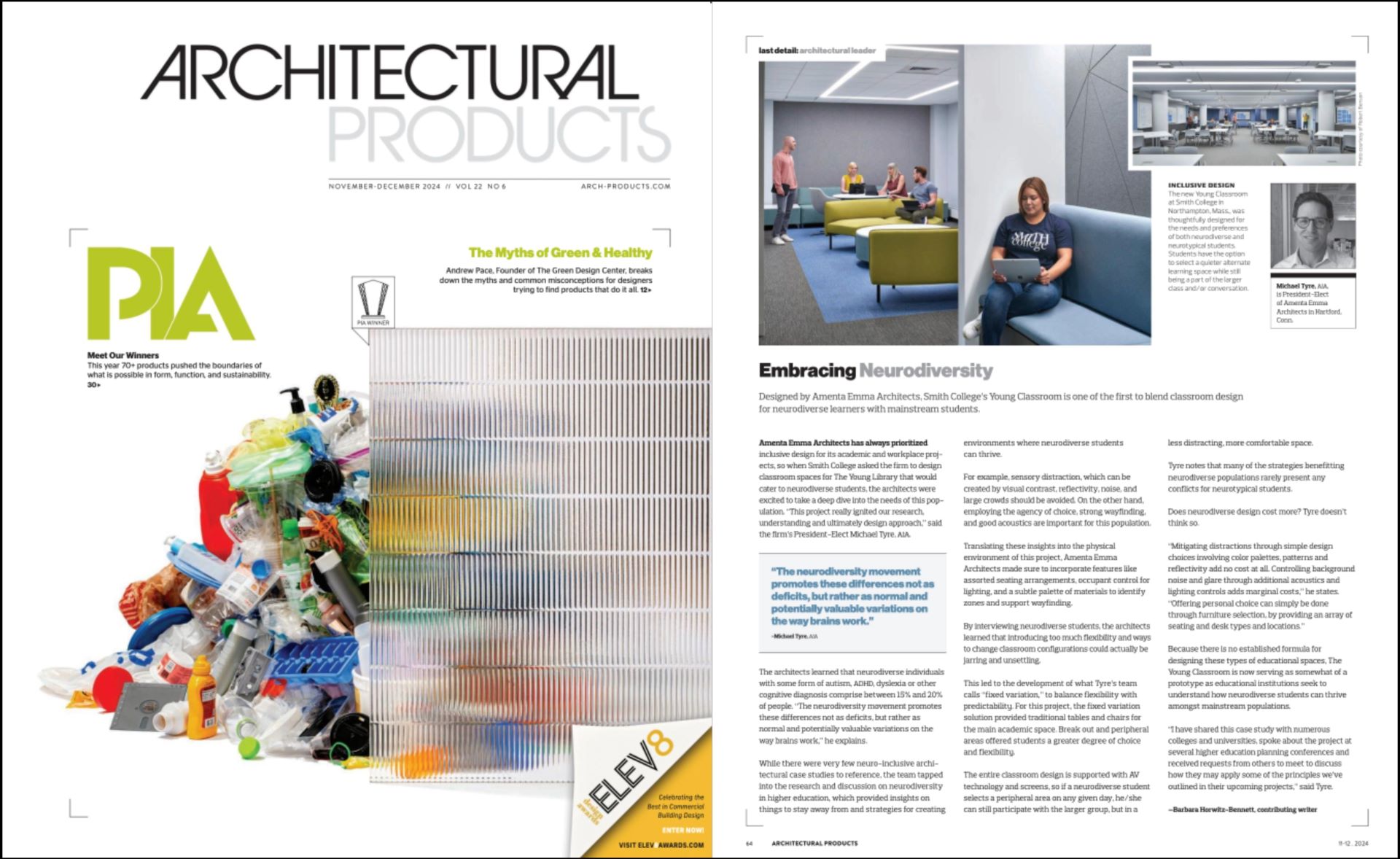Inclusive design has always been central to the work we do at Amenta Emma and in recent years we have focused on developing our approach to neuroinclusive design. Amenta Emma President Michael Tyre had an opportunity to discuss some of this work with Architectural Products.
In the latest installment of her “Last Detail” column, Barbara Horwitz-Bennett shares insights from Michael’s work on Smith College’s Young Classroom, a groundbreaking space that is designed to include learners of all kinds, including those who identify as neurodiverse. This project challenged the design team to dig deep into research and explore strategies that foster both choice and predictability — critical components for neurodiverse students.
“The neurodiversity movement promotes these differences not as deficits, but rather as normal and potentially valuable variations on the way brains work,” Tyre told Horwitz-Bennett.
The Architectural Products feature details how elements like strong wayfinding, carefully controlled lighting, and flexible seating zones can make a profound impact. These strategies not only support neurodiverse learners but also create spaces that are more comfortable and functional for all.
We’re proud to see our work at Smith College recognized as a model for how educational design can adapt to better meet the needs of every student.
Read the full article in Architectural Products here.






